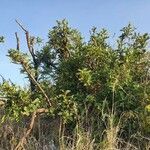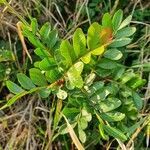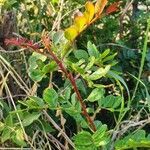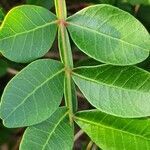A shrub or small tree. It grows 15 m tall. The bark is dark brown. The leaves are compound with 2-5 pairs of leaflets. The leaves are alternate. The leaflets do not have stalks. The young leaves are red. The flowers are yellow or purple. The are in groups in the axils of leaves. These are 1-5 cm long. The fruit are green and turn red. They are 5 mm across.





